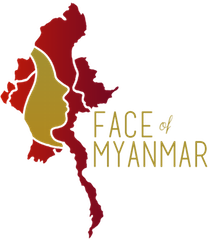



Project
Project
"Times are changing in Myanmar, and it is happening with 21st century speed." -Amanda Jones, LA Times
Face of Myanmar is a project documenting the variations of people and culture during the most pivotal period of this recently opened nation. From the isolated mountain villages in the Himalayan foothills to the ever-growing international port city of Yangon, we will detail the livelihoods of Myanmar people through photography, video, and conversation. People are interviewed to highlight the intricacies of their lifestyle and where they live. Yet what is it that unifies them as a people?

Research for a New Era
Research for a New Era
Myanmar is the largest country in mainland southeast Asia and is home to over 100 distinct ethnic groups. (Map courtesy of MIMU)
The reality of Westernization
Now is a pivotal point in Myanmar's history where the influx of Western ideology and structures is greater than ever. Thailand, the most culturally alike nation to Myanmar, experienced a similar transformation some thirty years ago. National Geographic journalist Seth Mydans recounts the profound effect of urbanization on Thailand's social fabric:
During the economic boom that began in the 1980s, wealth poured into the country at such a pace that per capita income tripled within one generation. Bangkok, the nation's capital, was transformed into a high-rise metropolis where shopping malls competed for space with Buddhist temples. Country people flocked to the big city pulling apart family structures and discovering new ways of seeing the world.
With the heightened Western interest in Myanmar, a dilution of traditional life and values, similar to Thailand, is to be expected. We do not intend to portray Westernization as evil, we simply want to acknowledge its growing presence. Most visibly, customary dress and beauty standards are already becoming Westernized in many of the nation's cities. Technology and social media, however, have advanced rapidly. Myanmar people are now faced with a world dominated by 21st century technologies like the Internet and cell phones. Domestic telecom companies plan to reach 90% of the population within the next five years (Economist, Jan. 2015). Accordingly, what took Thailand a few decades to achieve will take Myanmar only a few years.
Embracing cultural diversity, embracing Thanaka
A Bamar woman wears Thanaka paste on her face at a jade market in Mandalay. She prepares traditional Betel nut packages while a jade worker on break peruses his cell phone.
Today, modernization and globalization are inevitable. Sharing ideas and images are easier than ever before, and this makes maintaining cultural diversity a priority. With the Western beauty standard finding its way into traditional cultures, people in Myanmar have begun to overlook their special qualities and what makes them distinct. This project ultimately aims to facilitate a healthy blending of tradition with modernity.
In order to start raising awareness on the social norms native to Myanmar, we have chosen to highlight one unique cultural aspect: the use of Thanaka paste. Throughout the country, Thanaka bark is ground and mixed with water before applying to the body, most notably the face. Used for hundreds of years as a natural sunscreen, this practice has also become a form of beauty and individual expression. Mostly women and children wear it, but men from a number of regions still use it. We plan to investigate the diversity that exists within this specific social custom.
Photo-based research and documentation
Our hope is to synthesize old with new through a camera. Using portrait photography and videography, we will visually capture the faces of Myanmar people against a dynamic backdrop. We began our extensive research in early 2015 by traveling through 7 of the 14 ethnically diverse districts in Myanmar and recording the changes in both urban and rural areas. We conducted over 550 interviews and have more than 9,000 images that document the oral traditions and histories of many ethnic groups—sometimes for the first time. The situation in Myanmar presents a rare opportunity to observe a country transition out of social and political isolation. As our work continues, we will explore ways to embrace economic development without shedding centuries-old traditions, starting with Thanaka.
A Glimpse of Thanaka

The People We Met
The People We Met
The country is divided into 14 administrative districts: seven regions and seven states. Regions are inhabited mainly by the Bamar, the dominant ethnic group, while states are essentially areas home to specific ethnic minorities. The Myanmar government officially recognizes 135 distinct ethnic groups, but the true number is unknown.


















Clarification: On this site, Bamar and Burmese are used for members of the majority ethnic group; Myanmar refers to all citizens of the nation.













